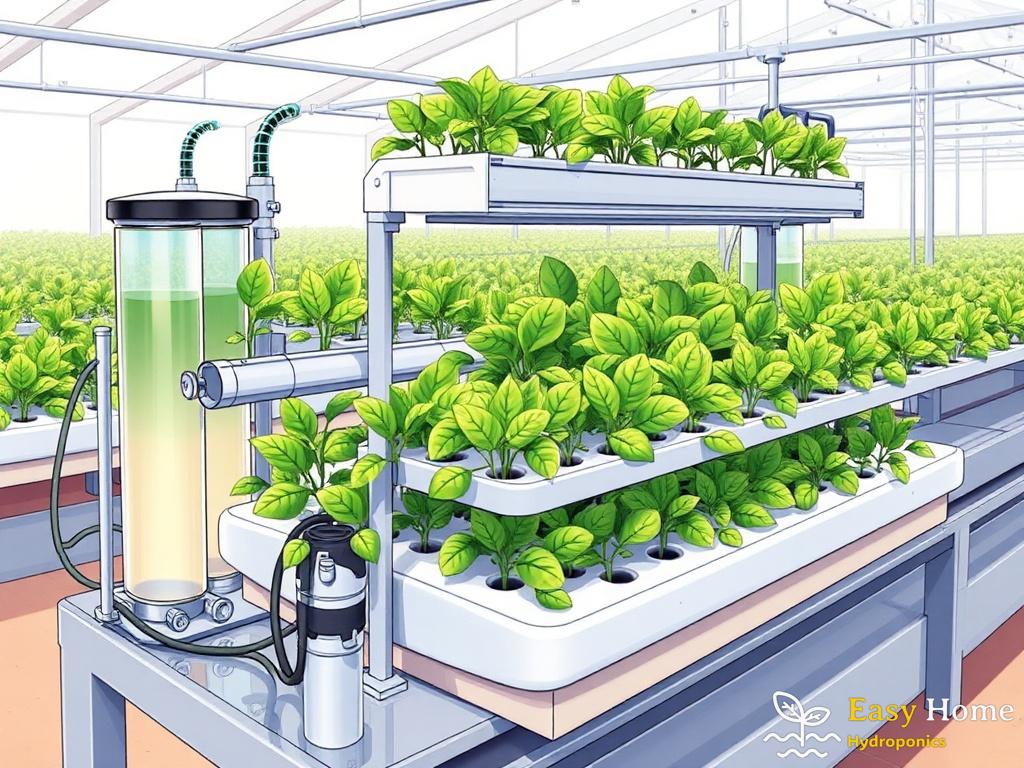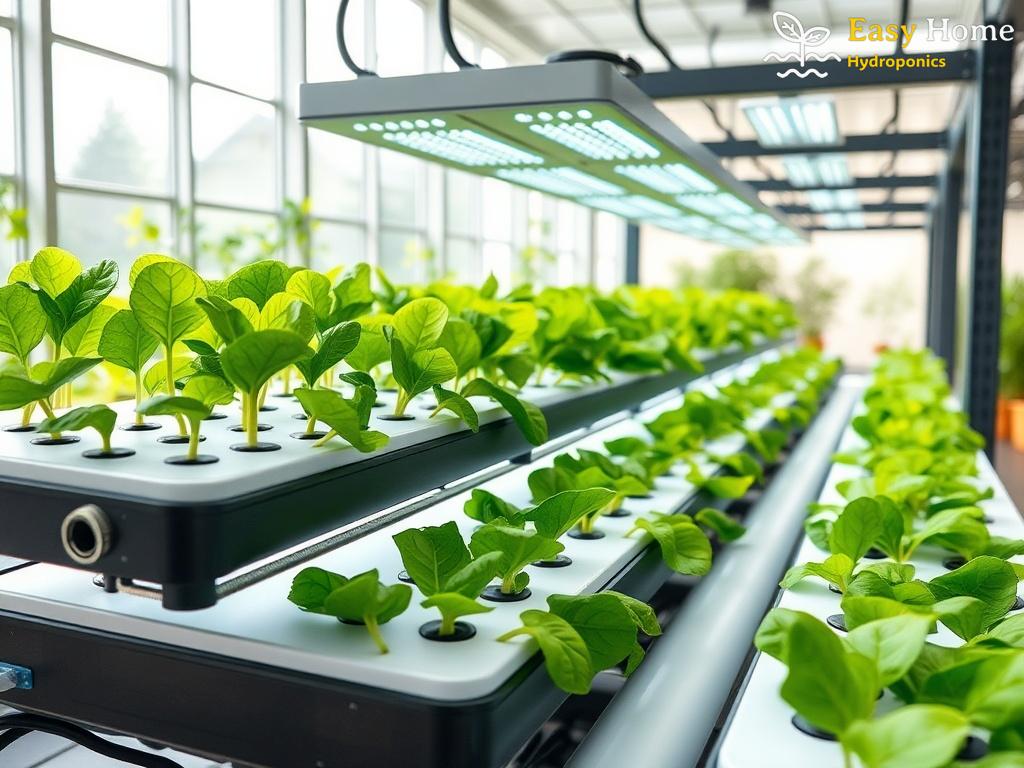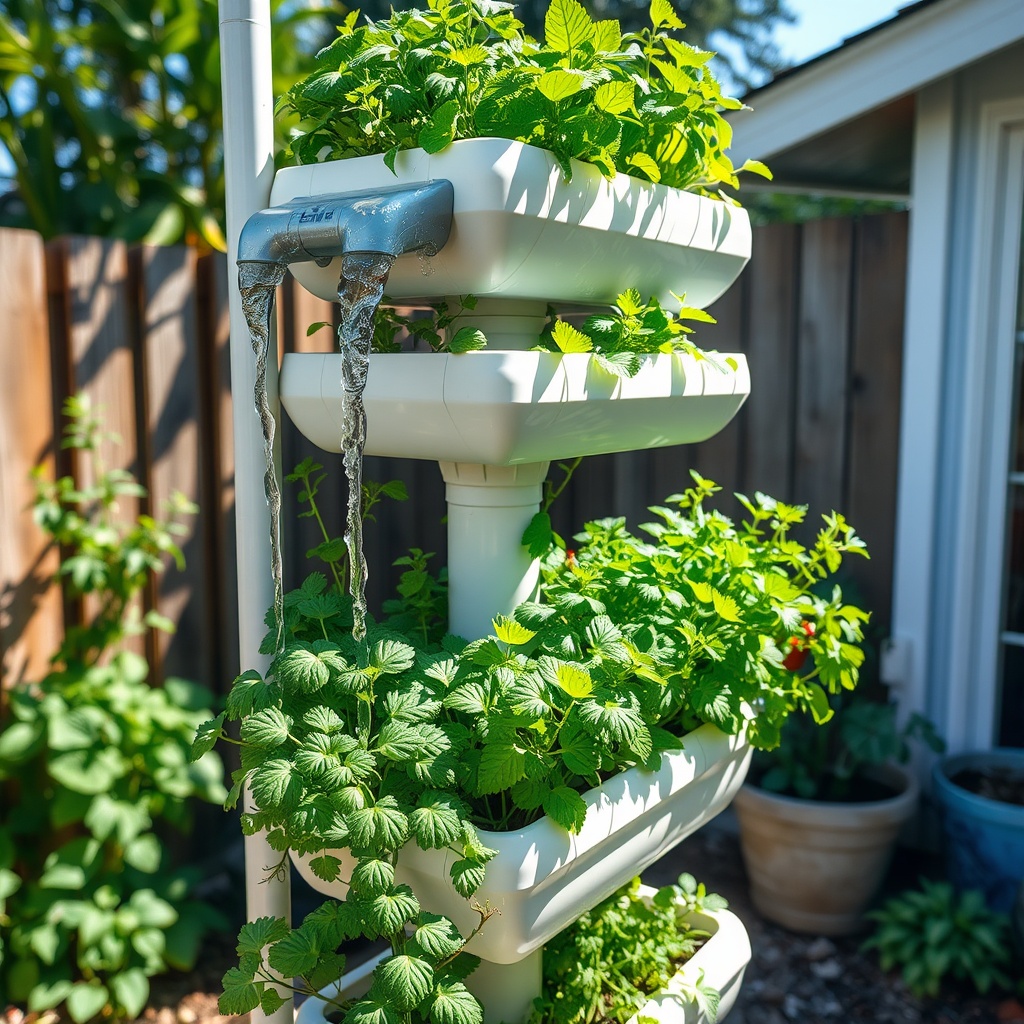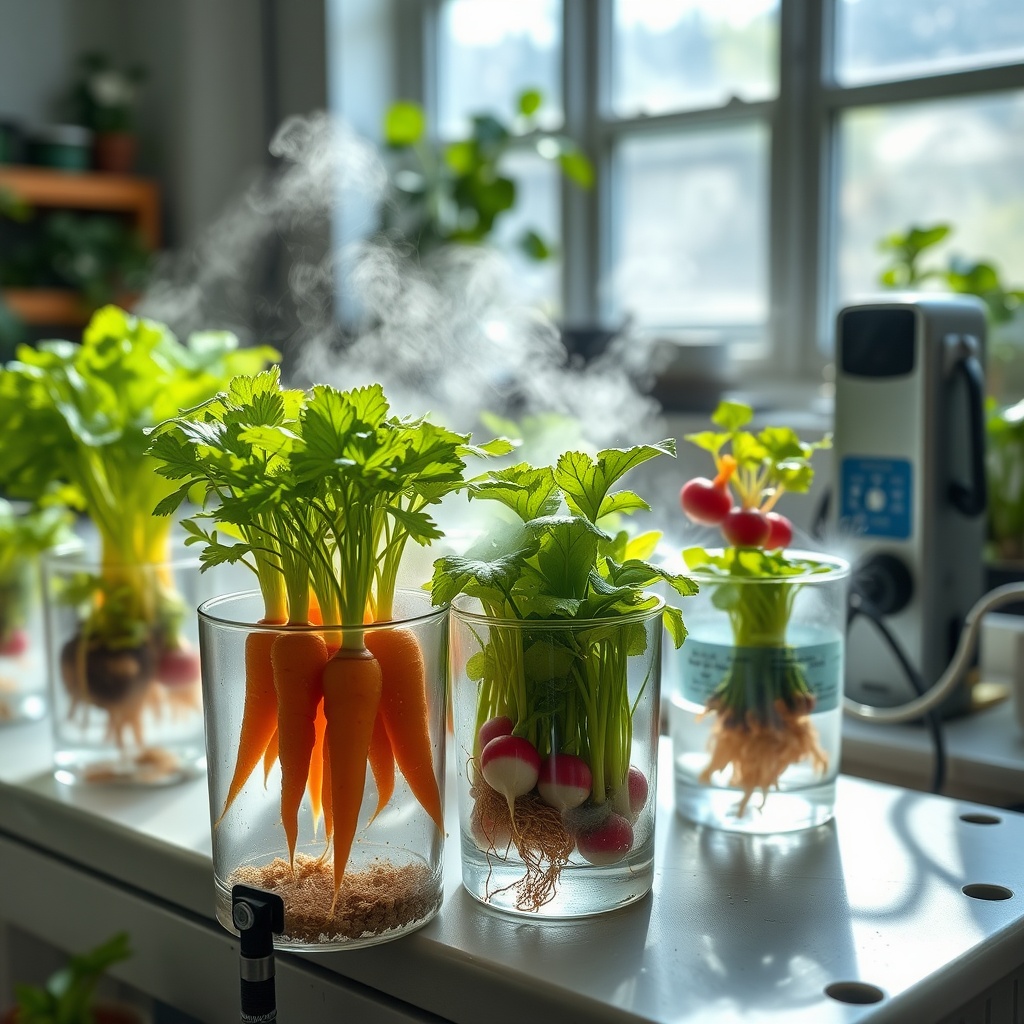Hydroponic Basics: Understanding the System

As the world increasingly turns to innovative methods of food production, hydroponics stands out as a revolutionary approach. This soilless method of growing plants not only maximizes space but also utilizes water and nutrients more efficiently. For those eager to cultivate fresh and nutritious spinach at home or on a larger scale, understanding the fundamentals of hydroponic systems is essential. Let’s dive into the core components that make hydroponics a game changer in modern agriculture.
At the heart of every hydroponic system lies a carefully designed setup that allows for optimal growth conditions. Hydroponics operates on several key principles that ensure plants receive the necessary nutrients directly through their roots, bypassing the soil altogether. The most common systems include Deep Water Culture, Nutrient Film Technique, and Ebb and Flow systems. Each has its unique advantages, depending on the scale of your operation and the specific needs of your crops.
| System Type | Advantages | Best For |
|---|---|---|
| Deep Water Culture | Simple to set up, great for beginners | Small home gardens |
| Nutrient Film Technique | Efficient nutrient delivery, minimal water use | Commercial production |
| Ebb and Flow | Versatile, suitable for various plant types | Intermediate growers |
To create a thriving hydroponic environment, you’ll need to invest in several key components. Understanding these elements will help you design a system that not only supports spinach growth but also enhances overall plant health.
- Grow Lights: Essential for indoor setups, providing the necessary light spectrum for photosynthesis.
- Water Pump: Circulates nutrient-rich water, ensuring that all plants receive adequate hydration.
- Nutrient Solution: A balanced mix of minerals and nutrients that feed the plants directly through their roots.
- pH Meter: Monitors the acidity of your solution, which is crucial for nutrient uptake.
By understanding and implementing these basic principles, you can unlock the full potential of hydroponics, paving the way for a bountiful spinach harvest in your own home or farm.
Choosing the Right Nutrient Solution for Spinach
When delving into the world of hydroponics, one of the most critical factors to consider is the nutrient solution. Spinach, known for its rich nutrient profile and rapid growth, thrives when provided with the right balance of minerals and elements. Unlike traditional soil gardening, where nutrients are derived from the earth, hydroponic systems necessitate a precise formulation to cater to the specific needs of spinach. This green leafy vegetable requires a careful blend of nitrogen, phosphorus, potassium, and trace elements to ensure optimal growth and flavor.
Creating an effective nutrient solution for spinach involves understanding its growth stages and how its nutritional requirements change over time. During the vegetative stage, spinach benefits from a solution rich in nitrogen, promoting lush, leafy growth. Conversely, as the plants approach maturity, adjusting the nutrient balance to include higher levels of phosphorus and potassium can enhance overall yield and improve the plant’s resistance to stress. Additionally, incorporating essential trace elements such as magnesium, calcium, and iron is vital, as they play crucial roles in photosynthesis and nutrient transport.
With a plethora of options available, growers often face the choice between commercial nutrient solutions and DIY recipes crafted at home. Commercial products are designed to deliver a complete nutrient profile, providing convenience and consistency. However, for those inclined towards customization, formulating your own nutrient solution can be a rewarding venture. This approach allows for adjustments based on environmental conditions and specific spinach cultivars. It’s essential to monitor the pH levels and electrical conductivity of your nutrient solution regularly to ensure that the spinach can efficiently absorb the nutrients provided. A pH range of 5.5 to 6.5 is ideal for spinach, allowing for maximum nutrient uptake while preventing potential deficiencies.
Optimal Lighting Conditions for Healthy Growth
When it comes to cultivating spinach in a hydroponic setup, achieving the right lighting conditions is integral to fostering robust growth and maximizing yield. Light is a critical factor that directly influences photosynthesis, which is essential for plant health. Understanding the unique lighting needs of spinach can help you create a thriving environment that supports vigorous foliage development and ultimately delivers a bountiful harvest.
Spinach, being a leafy green, prefers bright, indirect light. It flourishes under a spectrum that mimics natural sunlight, and artificial grow lights can effectively replicate these conditions. While sunlight can be an excellent source of energy, many indoor growers rely on specialized lighting systems to ensure their spinach receives adequate exposure regardless of external weather conditions. The intensity, duration, and type of light all play significant roles in the growth cycle of spinach.
Research indicates that spinach thrives under a combination of red and blue light wavelengths. Red light encourages flowering and fruiting, while blue light is essential for vegetative growth. For spinach, a balanced ratio of these two spectrums promotes lush, healthy leaves, which are not only visually appealing but also packed with nutrients. In practice, using full-spectrum LED grow lights can provide the necessary wavelengths that cater to the plant’s growth stages, ensuring that your spinach remains vibrant and healthy.
Another pivotal aspect of lighting is determining the right photoperiod. Spinach typically requires around 12 to 16 hours of light each day to achieve optimal growth. Too little light can result in leggy, weak plants, while excessive light can lead to stress and hindered development. It’s crucial to monitor the intensity of the light; ideally, spinach should receive a light intensity of around 200 to 400 µmol/m²/s during the day. This range ensures the plants can perform photosynthesis effectively without being overwhelmed.
Utilizing timers can help maintain a consistent light schedule, mimicking natural day and night cycles. Additionally, keeping the lights at an appropriate distance from the plants is vital to prevent heat stress and ensure even light distribution. Regularly adjusting the height of the lights as the plants grow will maximize their exposure and support healthy, robust spinach growth.
Managing pH Levels for Spinach Success
In the intricate world of hydroponics, achieving the ideal pH level is akin to discovering the holy grail for spinach growers. The health and vitality of your spinach plants hinge on maintaining the right acidity in your nutrient solution, which directly affects nutrient uptake and overall growth. A well-balanced pH not only ensures that your plants thrive but also helps prevent a myriad of issues that can stem from improper levels.
Understanding the pH Scale: The pH scale ranges from 0 to 14, with lower values indicating acidity and higher values indicating alkalinity. For spinach, the optimal pH level falls between 5.5 and 6.5. This specific range allows for maximum nutrient absorption, ensuring that essential minerals like nitrogen, phosphorus, and potassium are readily available to the plants. When the pH drifts outside this range, spinach can experience nutrient deficiencies or toxicities, leading to stunted growth and poor yields.
Monitoring and Adjusting pH Levels: To maintain the ideal pH, it’s crucial to regularly monitor your nutrient solution using a reliable pH meter. This device provides real-time feedback, allowing you to make quick adjustments as needed. If your readings indicate a deviation from the optimal range, you can employ pH up or pH down solutions to correct the levels. Adding these solutions gradually and in small increments is essential, as drastic changes can shock your plants and hinder their growth. Consistency is key, and keeping a close eye on your nutrient solution will help you achieve long-lasting success.
Common pH Issues and Solutions: Despite your best efforts, you may encounter challenges in managing pH levels. One common issue is the buildup of nutrient salts, which can affect acidity. Regularly flushing your system with clean water can help alleviate this problem, ensuring that your plants receive a balanced nutrient profile. Additionally, using high-quality water sources, such as distilled or reverse osmosis water, can prevent unwanted contaminants from interfering with your pH levels. Understanding these nuances will empower you to create a more stable environment for your spinach and lead to a thriving hydroponic garden.
Harvesting Techniques: When and How to Pick Spinach
One of the most exciting moments for any hydroponic grower is the harvest. Knowing when to pick your spinach is crucial, not only for achieving the best flavor but also for ensuring that the plants continue to produce. Spinach, a fast-growing leafy green, typically reaches maturity in about 6 to 8 weeks. However, the exact timing can vary based on factors such as lighting, nutrient levels, and temperature. To determine the right moment for harvesting, observe the size of the leaves and the overall plant health. Spinach should be harvested when the leaves are young and tender, usually when they are around 4 to 6 inches in length. If you wait too long, the leaves may become tough and start to bolt, which can lead to a bitter taste.
When the time comes to harvest your lush spinach, employing the right techniques can make all the difference. For hydroponic systems, a gentle touch is essential. Use clean, sharp scissors or garden shears to cut the leaves. Start by snipping the outer leaves first, leaving the inner leaves intact to promote continued growth. This method, often referred to as cut-and-come-again, allows you to enjoy multiple harvests from the same plant. If you prefer to harvest the entire plant, do so in the morning when the leaves are crisp and full of moisture, ensuring the best flavor and texture. Be sure to handle the plants carefully, as rough treatment can damage the delicate roots, impacting future growth.
Once you’ve gathered your spinach, it’s important to handle it properly to maintain its freshness. Rinse the leaves gently under cool water to remove any residual nutrients or debris. Pat them dry with a clean towel or use a salad spinner to eliminate excess moisture. For optimal storage, place the spinach in a breathable bag or container in the refrigerator. This will keep your greens crisp for up to a week. If you find yourself with an abundance of spinach, consider blanching and freezing it for future use. This not only preserves the nutrients but also offers the convenience of having fresh spinach on hand for cooking. By understanding the best harvesting techniques and post-harvest care, you can enjoy the fruits of your hydroponic labor, transforming your home into a thriving spinach oasis.




